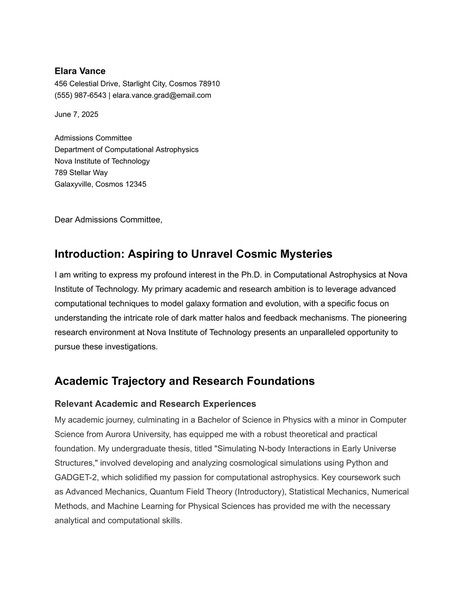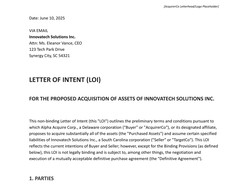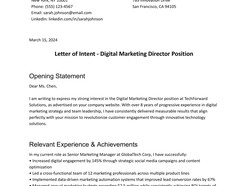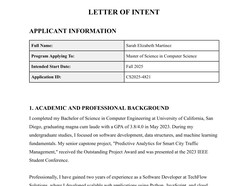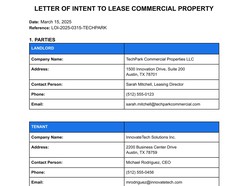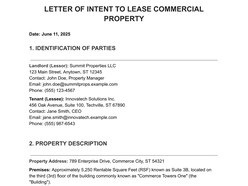This Google Docs template offers a structured framework for composing a persuasive Letter of Intent (LoI) or Statement of Purpose (SoP) crucial for graduate school applications. It is designed to guide applicants in presenting their qualifications, research interests, and aspirations with clarity and professionalism.
Features:
- Professionally structured layout adhering to modern academic standards.
- Clearly delineated sections covering all essential components of an effective LoI.
- Guidance within each section, exemplified by realistic sample content (to be customized).
- Optimized formatting for headings, paragraphs, and a skills summary table.
Intended For:
- Prospective students applying to Master's or Ph.D. programs.
- Individuals seeking a robust starting point and clear structure for their application essays.
- Applicants aiming to submit a polished and impactful document.
Usage Scenarios:
- Preparing admission materials for graduate-level academic programs.
- Organizing thoughts and content effectively to articulate academic and career goals.
- Ensuring a comprehensive and well-presented submission to admissions committees.
Format: Google Docs
Contributed by: Olivia Davis
How to Use This Template
Accessing and utilizing this Letter of Intent template is straightforward. A Google account is necessary to make a copy.
Create Your Copy: On the template page, locate and click the "Use template" button (often found in the top right). This action will generate a personal, editable version of the document within your Google Drive.
Personalize Content: Systematically replace all placeholder and sample information with your unique academic background, research experiences, specific program interests, and career aspirations. The provided examples serve as structural guides only.
Tailor to Each Institution: Critically, adapt the letter for every distinct program and university. Generic submissions significantly diminish impact. Highlight specific faculty, research projects, or program elements that uniquely resonate with your goals.
Key Considerations for an Effective Letter:
Authenticity: Ensure your genuine voice and enthusiasm for your chosen field are evident. Avoid overly formal or impersonal language that obscures your personality.
Specificity: Provide concrete examples and detailed explanations rather than broad claims. Demonstrate your qualifications through tangible evidence.
Alignment: Clearly articulate how your interests and qualifications match the specific offerings and strengths of the target program and its faculty. This shows you have done thorough research.
Conciseness: Adhere to any specified length limitations. Admissions committees value clear and direct communication.
Professionalism: Meticulously proofread for any errors in grammar, spelling, or punctuation. A polished document reflects attention to detail and respect for the application process. Consider asking a trusted peer or mentor to review your draft.
What to Avoid:
Direct Copying of Samples: Never submit the sample text as your own. The template is a guide for structure and inspiration, not a pre-written letter.
Vagueness: Generic statements about passion or interest are insufficient. Connect your aspirations directly and specifically to the program and institution.
Resume Repetition: Use the letter to expand upon and provide context to your resume or CV, not merely to list achievements already detailed elsewhere.
Informal Language or Clichés: Maintain an academic and professional tone throughout. Avoid slang, overly casual phrasing, or tired expressions.
